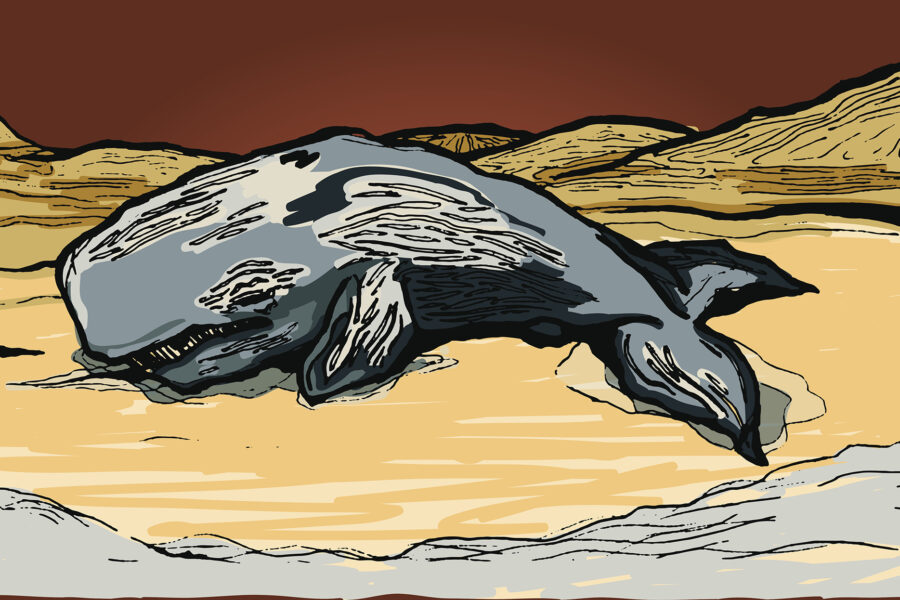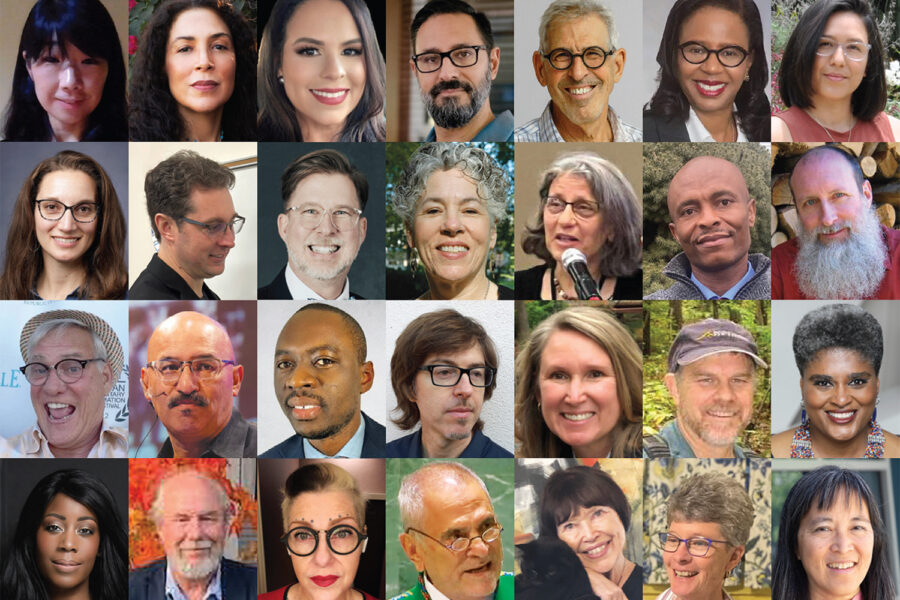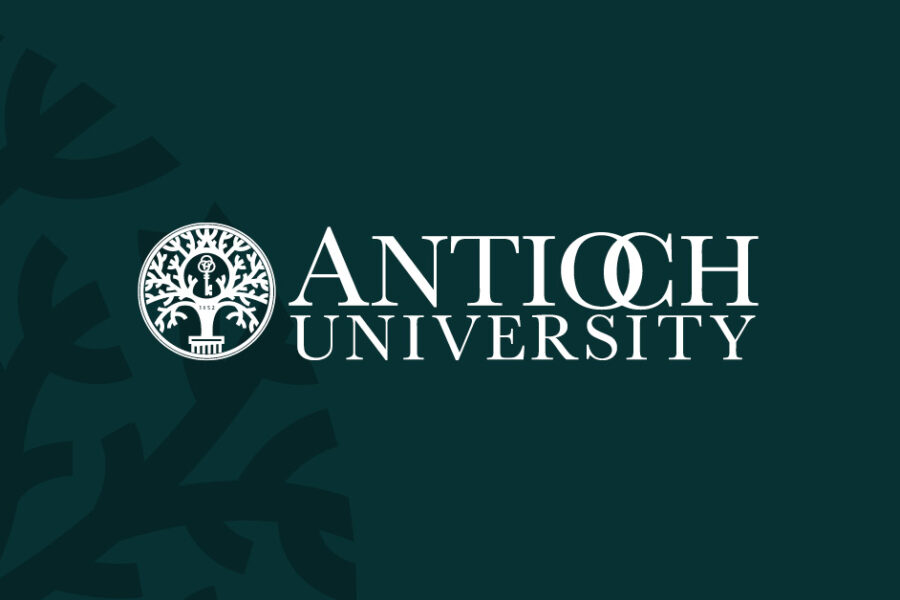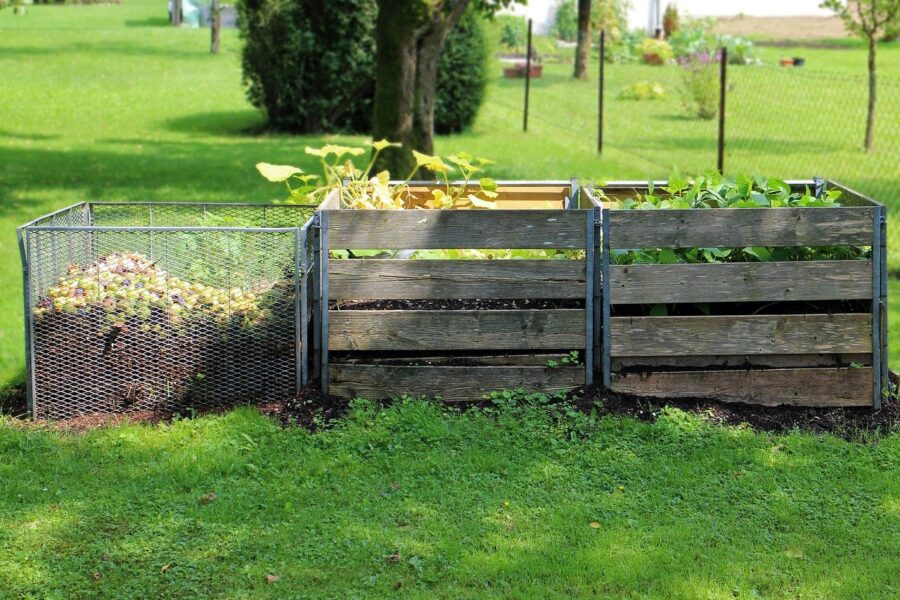The image we have of climate activism is often one of direct action: scientists chaining themselves to the doors of a Wells Fargo branch to encourage the bank to divest from fossil fuels; Greta Thunberg leading a school strike. But that’s not the extent of what climate activism can be. If we look closer, individuals and communities across the nation and planet are regularly making decisions in their day-to-day lives that impact climate change both today and in the future.
And there is big work to do.The infrastructure we need, like housing, sustainable food systems, and renewable energy sources, will only be built if we change the systems that are deeply embedded in our government, economies, and cultures. This means it’s going to take all of us.
This summer we caught up with four Antioch graduates who have shaped their careers around creating the new systems we need. Their jobs are each different, and they are geographically dispersed, too, working on the East Coast, the West Coast, and in the Caribbean. But though their geographies and roles look very different, they each exemplify the multivalent approach necessary to build a resilient future. From relocating people living in flood plains to funding climate projects in the Caribbean and from electrifying fleets of buses to rethinking the ways we define and measure the carbon emissions of an entire state, they each are facing the realities of the scale of the changes we’ll need to make as a society. And they’re providing a model for getting started in actually doing the work of adapting to a changing climate.
Taking action around climate change doesn’t just mean big, symbolic actions like skipping a holiday with your grandparents so that by not flying you can keep your carbon footprint in check. Instead, as Shameika Hanson ’20 (New England, MS in Environmental Studies) explains, it can be an invitation to learn about the ways climate change will impact the future—and how we can be ready.
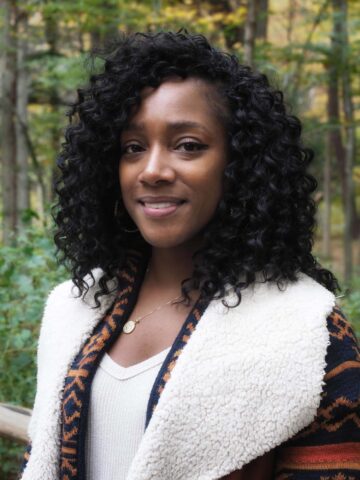
In fact, the ubiquitous call to “minimize your personal carbon footprint” was first introduced into wide circulation in the early 2000’s through a $100-million-a-year PR campaign paid for by British Petroleum (now rebranded as BP). These narratives were developed to purposefully move the focus away from the systemic nature of the climate crisis, to move away from the need for collective action, and to move towards an individualistic understanding of climate change and how to fight it.
Hanson, who works on flooding in New York State as part of The Nature Conservancy’s climate adaptation team, thinks more people should know this. As she says, “Me drinking out of a glass water bottle has no impact in comparison to Big Oil companies closing their sites down.” And they will never close a site down unless public, political, or market pressures force them to.
The opposite of individualistic thinking is forming coalitions and demanding systemic change. Many of us are overworked, balancing childcare, jobs, caregiving, and managing the daily tasks of life, but this new way of thinking about climate activism means that no matter what our jobs are, no matter what we enjoy doing in our free time, today is the day we can start turning towards the work climate change demands. This could look like taking one hour a week to attend a community meeting, or it could be writing a letter to our representative. We are made to feel like these small things don’t matter, that they won’t make a difference, but they are building blocks to bigger change.
Ryan Assiu ’13 (New England, MS in Environmental Studies) agrees that it’s important that we not get stuck on the personal changes but instead work towards systemic change. And he’s taken this advice himself. When he first started working in the climate sector, he focused his efforts on studying science. This was because in many sectors the question of whether or not climate change was real still seemed to be up for debate. Today, though, Assiu is working in public policy and climate finance in the Caribbean—doing something more tangible than arguing about settled science. As he says, “We are way past that. We are now in a place of action. And action can take many forms.”

Assiu has a favorite photo, one that inspires his work in the Caribbean. It shows a beach in Tobago where he found, right there in the middle of the sand, on a rock with no soil, an almond tree growing. “That picture always represents to me resilience,” he says. “It always inspires me to try to figure out how to make our economies, our communities as resilient as that tree.”
Growing up in the Caribbean, an area of the world that has contributed the least to the climate crisis, but which is on the frontline of its impact, Assiu found that the adults in his life expected him to choose a career path early on. The school system carried the echoes of British colonization, and many young people were pushed by their parents to become doctors, lawyers, or engineers. Assiu loved science, though, and he was lucky that his family decided to encourage him to continue with this subject he so enjoyed studying.
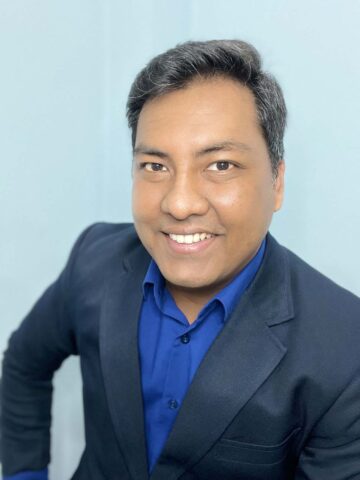
Today, when he talks to people coming into the field, he tells them it’s ironic that they learned being a doctor was the hardest and most important work they could do. “Being in environmental management is probably more complex and more difficult than medicine,” he says, “because a doctor can see a patient and give them a tablet and in two weeks time have the satisfaction of knowing that their patient has gotten better.” If you’re working in any sector related to climate change, on the other hand, there is no instant gratification.
“Facing a multi-generational crisis like climate change, you will commit your whole life to dealing with an issue and not see that big win,” he says. But that doesn’t mean the work isn’t worth doing—just that in the environmental field one is constantly facing competing stakeholders and entrenched systems. When dealing with complex systems like this, Assiu often reflects on something that his longtime Professor Emeritus Tom Wessels told him when he was studying for his degree. “We live on a spectrum between environmental utopia and total environmental collapse,” said Wessels. “Every action we take moves the needle towards one or the other—even if we don’t live to see the needle get there.”
For Esperanza Perez ’20 (New England, MS in Environmental Studies), the wins often come in the form of school buses with green roofs. She works in the Pacific Southwest for the Environmental Protection Agency, managing grants to replace older heavy duty diesel vehicles with electric or cleaner options. And through a program she helped design, she oversees a grant funding process and project implementation for school districts to purchase these school buses.

On a recent trip home, driving with her sister, she was excited when one of these buses pulled up next to them on the road. “I like pointing things out,” she explains. “I was like, ‘You couldn’t even hear it, cause it’s electric? Did you notice that? You don’t see that little puff of smoke anymore?’”
Being able to see the physical manifestations of her work is part of why she chose this job. It’s satisfying to see a dirty diesel bus replaced with a cleaner electric one, and especially to sit down with a calculator and think about all of the carbon she helps reduce from the atmosphere.
But even though she’s satisfied to be leading change, as she keeps learning more about the climate crisis she sometimes feels only too aware of the limitations of her work. “The long-term effects, I probably won’t live to see that,” she says. “I get the satisfaction of saying, ‘Oh, I’m doing my part’ in a sense. But at the same time I know it’s not enough.”
It’s something everyone living through the climate crisis has to come to terms with, if we are to be effective stewards for the future: nothing we do will ever be “enough,” but at the same time everything we do will help make a difference. We have to allow for our contradictions and complicity. In the world of climate activism, the perfect is quite often the enemy of good.

In accepting that our efforts aren’t always enough, it’s important to remind ourselves of certain facts of the systems we’re up against. In a 2019 report, the International Monetary Fund found that direct and indirect subsidies for coal, oil, and gas in the U.S. alone reached $649 billion in 2015. This topped even the Pentagon budget, which came in at $599 billion. This is a stark reminder that collective action will achieve the most when aimed at these larger systems.
For Nathan Robbins ’14 (New England, MS in Environmental Studies), his work is all about these larger systems. He’s the Climate Adaptation Program Manager within the Maine Department of Environmental Protection. This means that it’s his job to incorporate a climate lens into his department’s regulatory framework, environmental monitoring activities, and infrastructure investments.

This attention to all of the many areas over which his department has influence is key to making necessary changes sustainable. Sustainability is often associated with images of organic food and wind turbines, but climate-informed policy offers solutions that are embedded in the way large scale parts of our life are planned. These are stronger than executive orders or company promises, which can (and often do) change depending on who happens to be in power.
That’s why Robbins was part of the team that designed and implemented the Maine Climate Council, a 39-member advisory council made up of representatives from state agencies, research institutions, municipal representatives, NGOs, youth, and industry. Explains Robbins, “We were able to work on legislation with the goal of creating a more sustainable framework for collaboration and consensus-building.”
In order for broad initiatives like the Maine Climate Council or Maine Department of Environmental Protection’s climate program to work, though, they have to involve the people who will be impacted most by climate change. And the resources enabling individuals to respond equally are becoming increasingly scarce in our era of inequality and economic precarity.
Hanson, in her work with The Nature Conservancy, sees the importance of lowering the barriers to join in climate activism and democracy so that people living in the most impacted communities can participate. “People cannot be involved in something if they cannot be involved,” she says. “There are other realities in life that, if we’re not considerate of, we’ll assume people don’t care.” To put it in even clearer terms, she says that “if you have to choose between putting food on the table, literally cooking dinner for your child, and going to this community meeting, you’re not going to pick the community meeting over your child ever.”
Those of us who are already facing systemic inequity and social violence—people who are low income earners, immigrants, people from communities of color, women, and LGBTQ+ people—are more likely to experience greater challenges from climate change. In order to make participation accessible, state agencies and organizations have to provide resources that are a benefit rather than a burden.
Before she started at The Nature Conservancy, Hanson organized with a group called Mothers Out Front. The organization worked with mothers, grandmothers, and caregivers to help amplify their demands that decision-makers eliminate the use of fossil fuels in their communities. It’s where she learned a lot of her storytelling, facilitation, and organizing skills. It’s also where she learned that providing things like childcare, food, and connection were central to making sure people could show up. In organizing meetings with Puerto Rican communities in the South Bronx, organizers incorporated food and music to make them more welcoming and culturally aligned.
Assiu, in his climate finance work. learned a similar lesson in one of Tobago’s poorest neighborhoods. He describes this neighborhood as a “hot spot” for crime, gang warfare, and drug use, but it’s also where he saw how an investment in climate resiliency can mean an investment in building community.
It started with two people who owned a furniture shop in that neighborhood. They had made the decision to use this light industrial space as a community hub, and created an NGO that uses sport and common community spaces to build social resilience. “They build their furniture, and every day at three o’clock, they push all the metal and woodworking stuff aside,” Assiu explains. “And they open up their factory and their home as a community space.” Kids, women, and other people in the neighborhood use the space to do homework, learn karate, dance, sports, and other skills like sewing and growing food.
The woodworkers ended up receiving grant funding through the U.S. Agency for International Development and the U.S. Embassy to support this work. Today their funding falls under Assiu’s portfolio, and he is advocating for them to receive private sector investment and additional development financing so they can scale this important social-enterprise model of building community-led climate resilience.
The underlying idea behind an initiative like this is that, in order to withstand climate-related shocks, people need to be able to work together and have the opportunities for sustainable livelihoods. The community space now connects people and bolsters a sense of pride in their environment. “You’re talking about taking people out of gangs, taking people out of prostitution, helping kids get an education,” Assiu says. Ultimately, it’s about “transforming these people’s lives and building a community.”
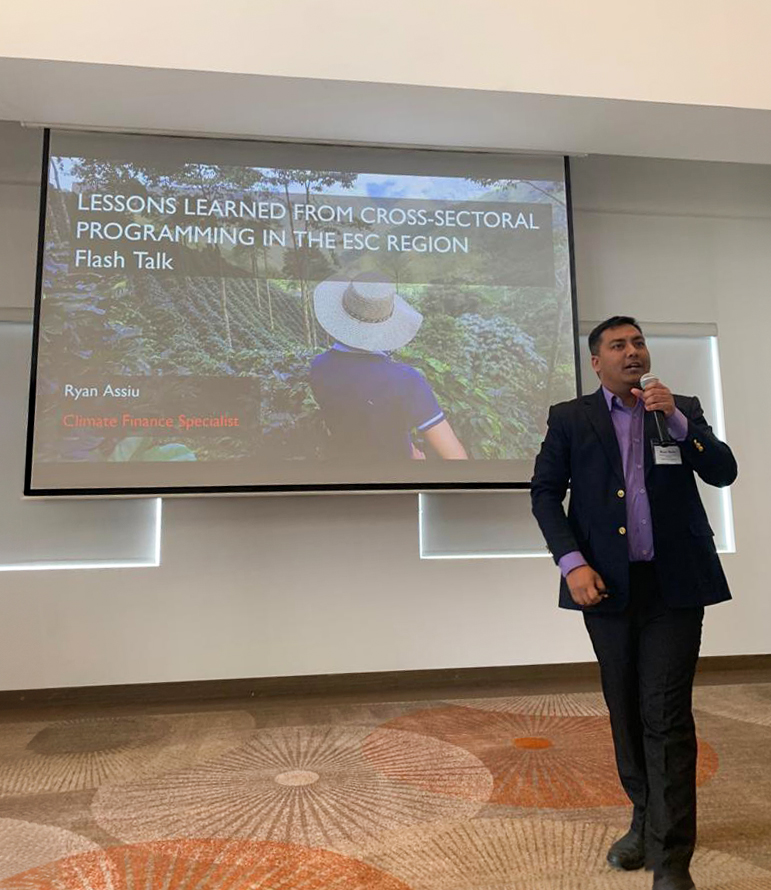
When we think of cultural and institutional change that needs to happen, shifting infrastructure through policy is key, but building grassroots community connections is what will save us when we’re dealing with the immediate impacts of the climate crisis. In order to do that communities need capacity and resources.
Robbins sees this at the state level as the Maine Climate Council, state agencies, and individual communities all work to access the infrastructure funds available from the bipartisan infrastructure law and the Inflation Reduction Act. “Part of our interagency efforts are to make sure we’re accessing as much of the funding as we can to support communities throughout the state,” he says.
Equity and justice have to be the guiding principles in our collective response to the climate crisis, agrees Assiu. “I see a growth in positions with a specific focus on climate justice,” he says. “So people will not only understand climate change science but also understand history, understand the complexities of governance systems, and why society ticks the way it ticks.”
This is a lens we all need in our climate work, not only in a professional capacity but in our daily lives. If we’re going to move forward without leaving anyone behind, we have to understand how we have reached this moment.
For Perez, this was a question she didn’t consider very often before she started working at the EPA. “I’ve always been the type of person who recycles, composts that sort of thing,” she says. “But I was never really the type to really think about who I’m voting for.” That changed after working at a government organization. “It made me realize that there’s only so much you can do on the individual level,” she explains. “And at some point you have to try to get those policy changes.”
In Maine, Robbins is trying to get these policy changes to build into ever-greater action. “I focus on knowing that there’s some momentum, and keeping that ball rolling,” he says. “Get more people in, make it simple. It’s not rocket science most of the time. It’s individual actions that people can do and connecting more people together for collective action.”
We’ll need that collective action. The transformational changes we’re living through will take all of us, pushing in the same direction with our different skills and motivations, to make it through.
What draws some of us to make our careers working in climate adaptation and justice? For Hanson, she actually wanted to be a pediatrician at an earlier point in her life, because that seemed like the most direct way to help other people. Her entryway into environmental work was when she realized sustainability and the climate crisis were people problems. Working in flood-impacted communities became an even broader avenue to make a difference. As she says, “I found a space that I could help to solve challenges that are going to affect and impact many people.”
It’s a call each of us can answer. We all have the chance to take our best impulses and bring them to this work. “Climate change is an everybody problem,” says Hanson. “And in any role that you’re in, you could be doing something about it.”
It’s exactly this can-do spirit that runs through all of these alums’ stories. For Assiu this is key, as in his work in the Caribbean he’s seen the way that taking action can be healing—and make us feel connected to the possibilities of the future. ”Focus on climate optimism,” he advises, “which to me is not burying your head in the sand and wishfully thinking climate change is going to go away on its own. Rather, look at the things that are going on around you, in your communities or at the government scale, that are making a difference and improving lives—and that are helping to change the world. If we look a little bit more at the good things that we can feel grateful for, it helps us combat that time and grief. And it also helps us stay sustainable and resilient to the face of these complex, wicked problems.”


